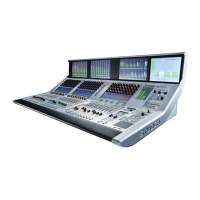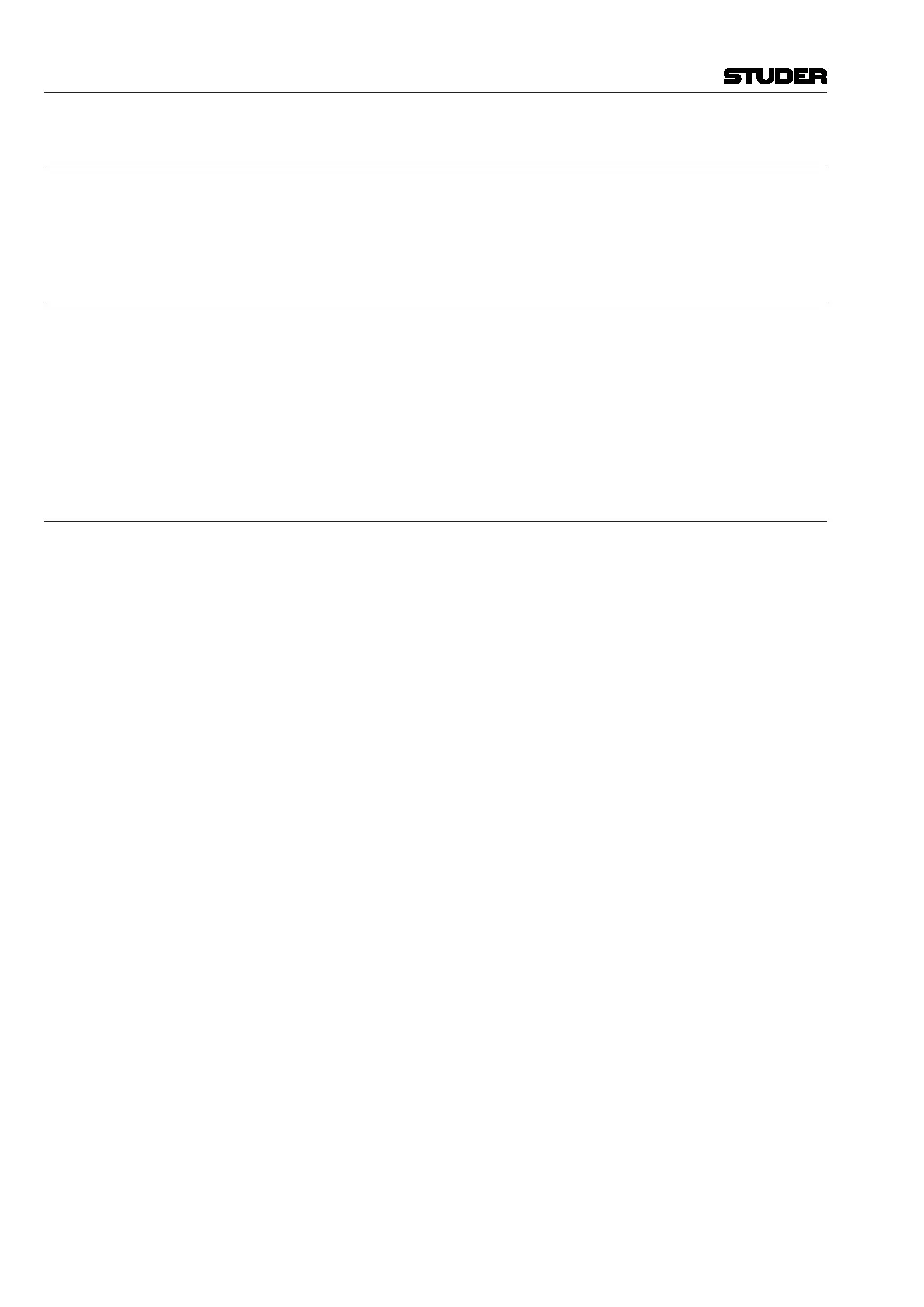Vista 5 M3 Digital Mixing System
5-20 AutoTouchPlus
Document generated: 28.08.13
SW V4.9
5.4 Essential Concepts
In addition to the various Rules, Conditions, and Options, there is a small set of
‘essential concepts’ that must be understood when operating AutoTouchPlus.
An explanation of these concepts follows.
5.4.1 Static and Dynamic Objects
One of the primary tenants of the AutoTouchPlus system is the concept of
Static and Dynamic controls. By definition, the value of a Static control is
remembered by the system, but does not change during the course of a Mix
Pass. Dynamic controls are defined by having one or more changes recorded
at specific timecode locations within a Mix Pass.
Note The terms ‘objects’ and ‘controls’ may be used interchangeably.
5.4.1.1 Static Objects
The addition of Static (objects) controls allows mixes to be created in much
the same way as mixes would be made on an analog console with fader/mute
automation, but with the power to automate any audio control as needed (not
just faders and mutes). Once set to the desired values, the vast majority of
controls will not need to be automated. However during the course of a mix,
the engineer may need to periodically adjust the settings of these controls
(such as ‘tweaking’ an EQ). As with an analog console, the new values will
be applied with the expectation that settings will be retained from Mix Pass
to Mix Pass. In AutoTouchPlus, Static controls will perform in this manner
and allows the user to work in a very familiar and intuitive fashion.
Static Objects A Static object is defined as any automatable control that has no dynamic
changes recorded within the Mix Pass. Therefore, Static objects retain one
value throughout a Mix Pass. Any switch, fader, rotary control and some GC
items (automation objects) may be classified as a ‘Static object.’ Static objects
act just like manual controls except that their final setting is remembered by
the automation. They may be adjusted at any time during the mix process
without needing to put them into a Write or Record automation mode or need-
ing to update the Mix Snapshot. The value of all Static objects is maintained
on a pass-by-pass basis. This simplifies the ‘tweaking’ of the hundreds of
controls within a mix session that must be adjusted, but will never move
against timecode.
All objects are Static until a dynamic move is recorded. Should a dynamic
move be required for a static object, the move can be simply written into the
mix, and the object is transformed automatically into a Dynamic automation
object.
Note If a control is put into Isolate, it’s static value will not change. If changed
while in Isolate, the control’s current value will be heard, but its Static value
will not be updated in subsequent Mix Passes.
Changing Static Values When a new mix (Mix Tree) is first opened, the Static value for every control
is stored in the first Mix Pass. The stored Static values will be the current

